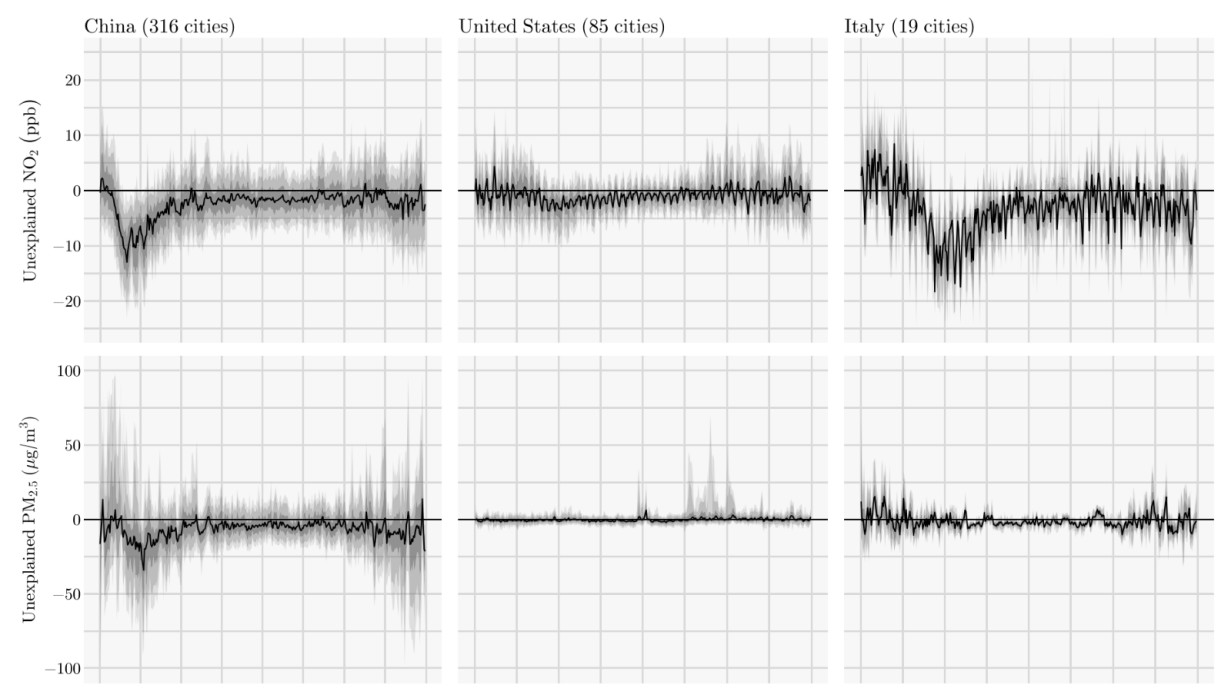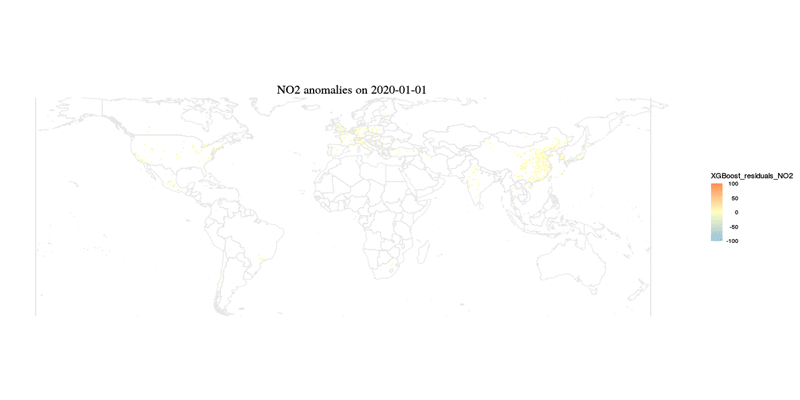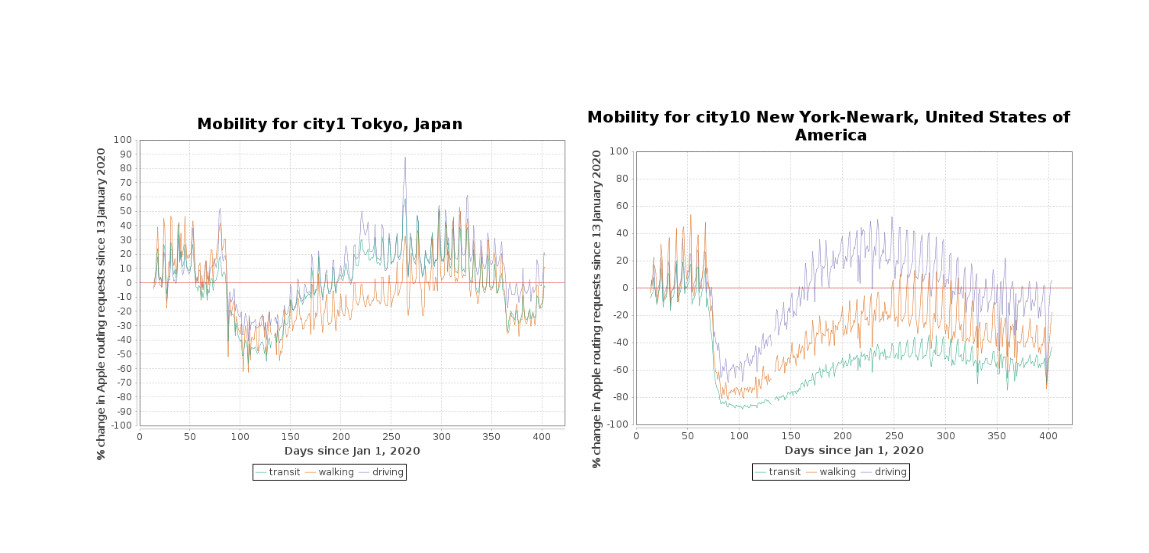
Sciences & Technology
COVID-19 drop in pollution to be short-lived

Global COVID-19 pandemic restrictions provided a natural experiment in understanding the relationship between transport and air pollution
Published 9 August 2022
As around four billion people around the world shut their doors during the COVID-19 pandemic – cutting their travel by more than half – city skies that were once overcast with air pollution began to clear up.
For governments around the world, public health responses early in the COVID-19 pandemic included restricting movement to reduce rates of disease transmission. While these restrictions were effective in dampening case numbers, they also produced significantly lower levels of air pollution.

For a brief period, the world enjoyed blue skies.
However, similar to the phenomenon associated with the global financial crisis, the wonder of clean air was short-lived as the world rode a path back to recovery.
In the case of COVID-19, air pollution levels rebounded sharply once those lockdowns lifted. In fact, in many cases it became even worse, depending on the predominant mode of transport in different countries.

Sciences & Technology
COVID-19 drop in pollution to be short-lived
For example, many people seeking to stay socially distanced in cities around the world avoided using public transport, instead swapping their train and tram commutes for more polluting private car trips.
Even the journeys avoided by workers who could switch to working-from-home were often offset by increased home deliveries or non-work leisure travel.
In an effort to return to business as usual as quickly as possible post-pandemic, governments like the US issued stimulus payments to its citizens and encouraged workplaces to re-open in an effort to ‘return to normal’.
But this return to normal missed a significant opportunity to lock in the reductions in pollution that had been achieved and boost the associated population and public health benefits.

Every year, an estimated 4.2 million people die prematurely from exposure to pollutants like fine particulate matter (PM₂.₅). These are inhalable particles so small they cannot be seen with the naked eye and are emitted from the combustion of fossil fuels.
An estimated further 250,000 people die prematurely from exposure to ozone (O₃), which is formed when pollutants emitted by cars and power plants react in the presence of sunlight.
Given the urgency of pollution-related health issues, our new research highlights the impact of pandemic restrictions – and reduced human mobility more broadly – on air pollution.

Health & Medicine
The impact of air pollution on life expectancy
While previous studies have presented case studies on pandemic air quality in a number of countries or a selection of cities, this study analysed air pollution data from a collection of over 700 cities (all the cities for which this data was available) around the world.
Using data on weather patterns and past levels of pollution, we taught machine learning models – these are programs that can find patterns or make decisions from previously unseen data – to predict what pollution levels would be like in each individual city if the pandemic hadn’t occurred.
By using this comprehensive sample of cities, our machine learning-based analysis highlights what could be achieved in each city – and globally – through the changes to transport patterns during lockdowns.

Our study showed that cities in China, Europe and India saw large decreases in nitrogen dioxide (NO₂) and PM₂.₅ – two pollutants highly associated with burning fossil fuels and car usage – that align with pandemic stringency levels including the reductions in mobility.
As the graphs show, NO₂ levels (and, to a lesser extent, PM₂.₅ levels) dropped around February/March 2020. In comparison, NO₂ levels in Italy didn’t change until March or April of that year.
Ozone (O₃) levels rose in the first half of 2020, with the atmospheric chemical reactions that create ozone driven by the reductions in NO₂. However, levels reduced below normal levels during the Northern Hemisphere’s summer months, when O₃ levels normally peak.

Countries like China and India enjoyed the greatest reductions in ambient particulate matter. This is particularly important as these two countries face some of the most severe health consequences of air pollution – together accounting for more than half of the world’s PM₂.₅ exposure-related deaths.
The pandemic has provided a natural experiment in understanding the relationship between transport modes and air pollution. To fulfil some of the promise we saw during the pandemic’s rapid drops in pollution, cities might aim to transform mobility through active and pollution-free transport.
The mobility changes over 2020 have given us an opportunity to examine how our use of transport systems contribute to pollution.
For example, New York City and Tokyo (as shown in the figure below) saw commensurate drops in pollution as mobility ceased across all types of transport during COVID’s first wave.

However, when opening up after the first lockdown, New York City’s mobility returned largely through private motor vehicle journeys – far exceeding previous baselines, with public transport levels never returning to normal levels. Meanwhile, in Tokyo, both public transport usage and automobile journeys rebounded at more equal rates.
Cities like Brussels, Rome and Paris have created a combined 250 kilometres of new cycling paths as part of post-pandemic transportation plans. Australian cities have yet to do the same – there is certainly no shortage of demand for cycling infrastructure.
Post-pandemic, weekly volumes of bikes on cycling paths increased by 140 per cent on the South Perth Foreshore, by 165 per cent on the Outer Harbour Greenway in Adelaide, and by a whopping 169 per cent on the Bay Trail in Brighton in Victoria.

Creating cycling lanes, along with providing other forms of transport like ride sharing, gives cities a means of lowering emissions. People who can work from home should do so, eliminating the need for daily commutes to the workplace altogether.
If governments want to protect their populations from pollution-related illnesses and death, they will need to create alternative transport systems that aren’t centred around private car journeys.
Only then will our ‘new normal’ allow us to enjoy clear skies and longer lives.
Banner: Photos taken before and after pandemic restrictions in India/Getty Images